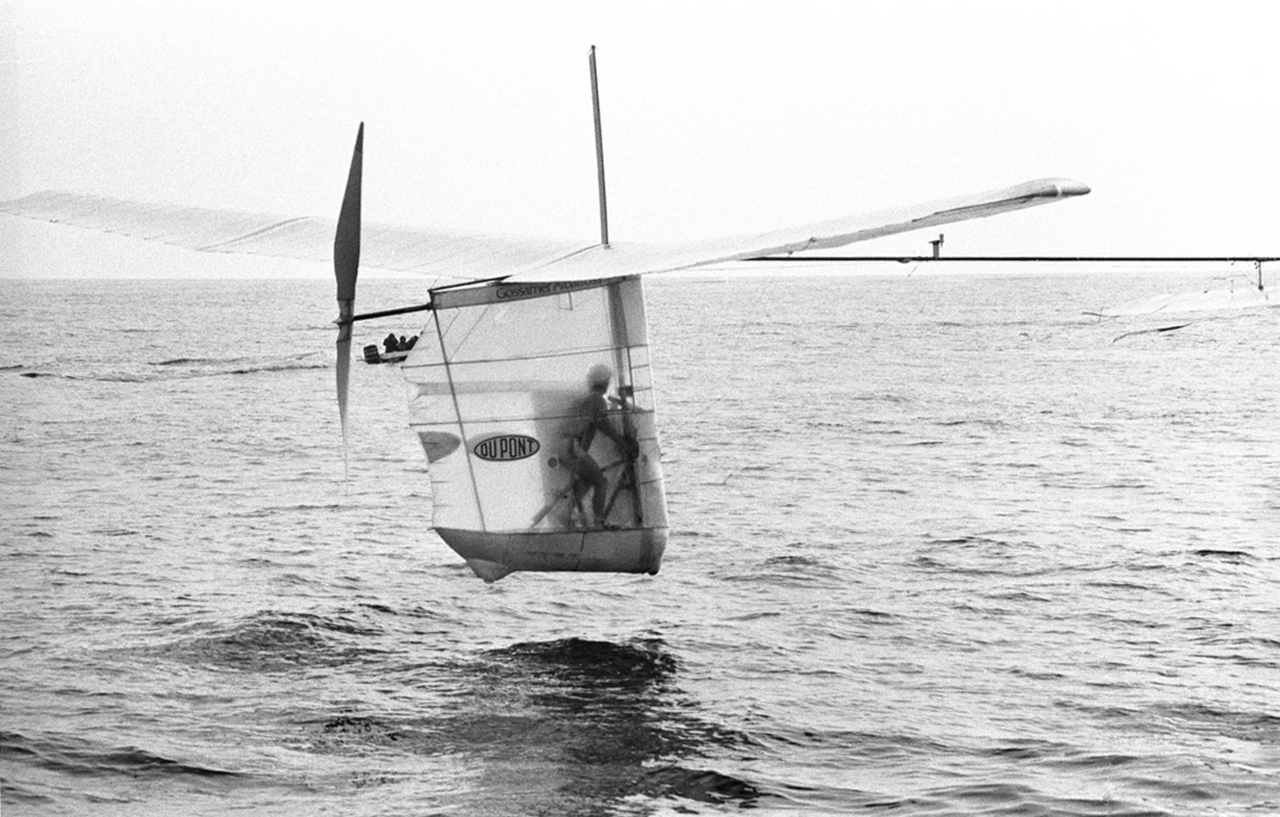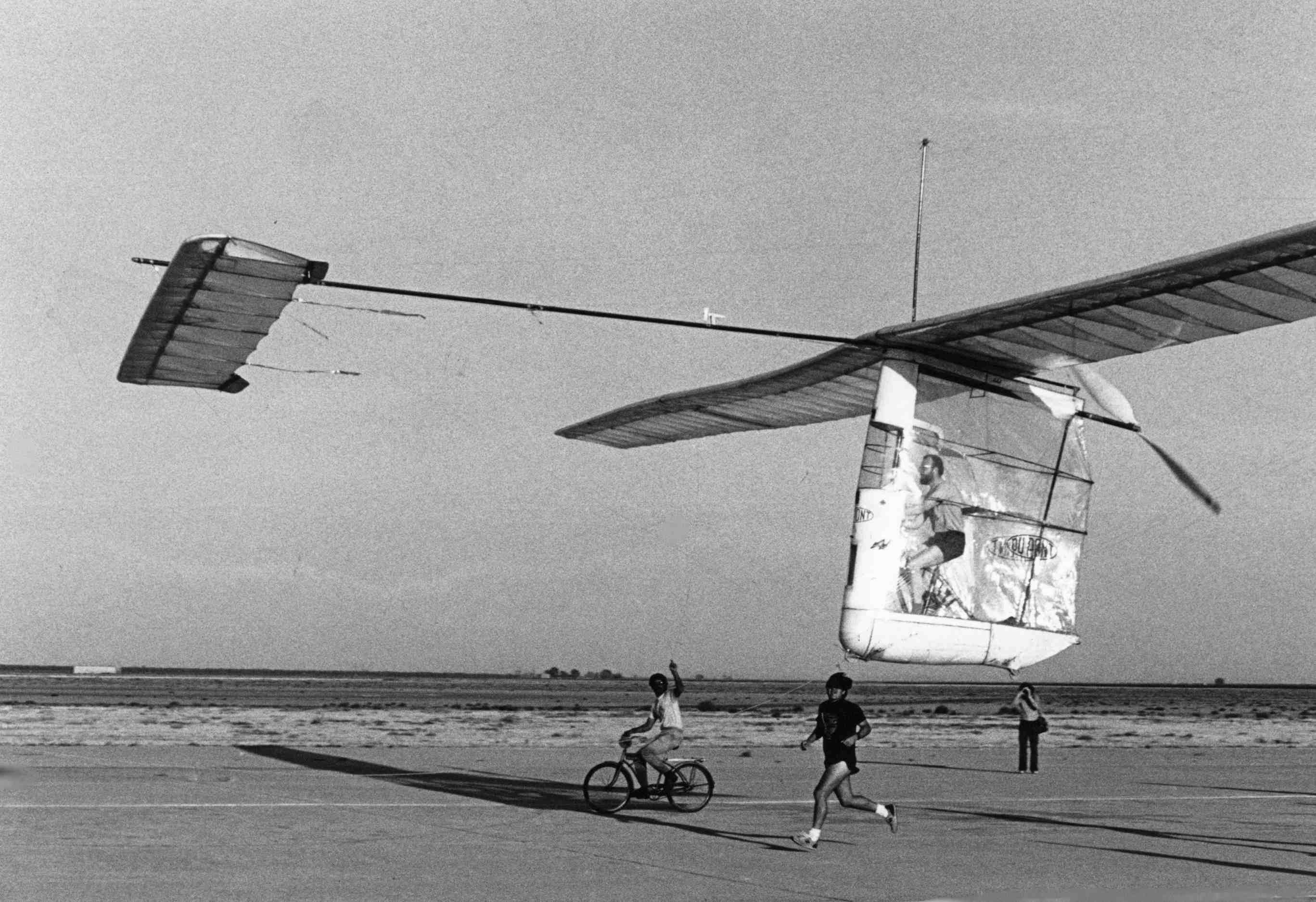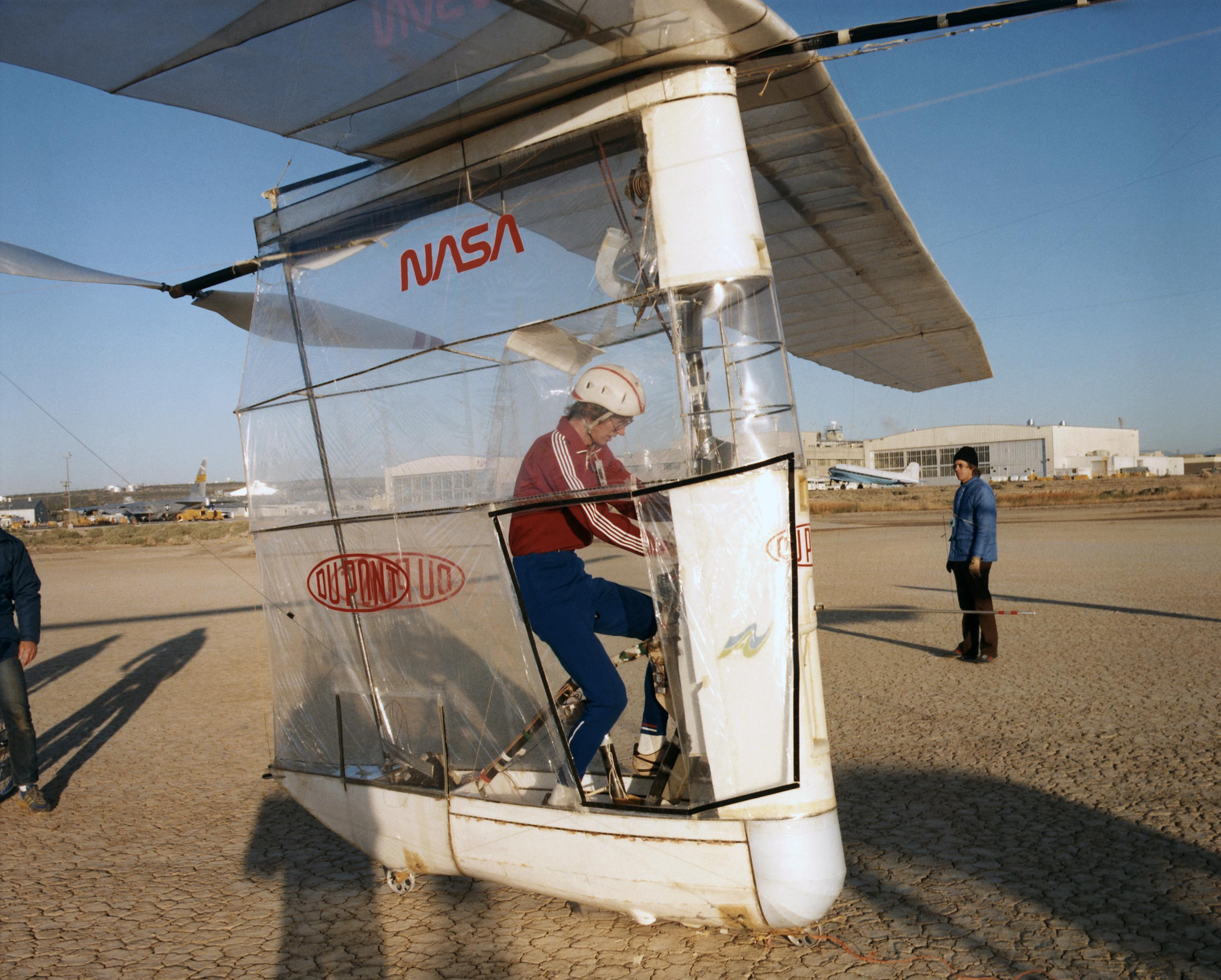45th Anniversary of the Historic Human-Powered Flight Across the English Channel

On June 12, it marked 45 years since the first-ever human-powered flight across the English Channel.
On that day in 1979, 26-year-old American cyclist and amateur pilot Bryan Allen crossed the Channel on the muscle-powered Gossamer Albatross II. He covered the distance of 35,820 meters at an average altitude of 1.5 meters and an average speed of 12.7 km/h.
The unusual flying machine was created in the USA under the leadership of aeronautical engineer Paul B. MacCready. It was an ultra-light airplane with a "canard" aerodynamic configuration and a wingspan of almost 30 meters. The construction utilized carbon fiber and polystyrene foam, which was used to make the wing ribs. The covering was made of a very light Mylar film. The empty weight of the craft was only 32 kg, and the take-off weight, including the pilot, was 98 kg. The pusher propeller was powered by a pedal mechanism, with the pilot himself serving as the engine.
Bryan Allen started almost at 6 am, near Folkestone in England. The weather was ideal for the flight. However, soon a headwind arose, significantly complicating the pilot's work. According to calculations, the flight was supposed to last no more than two hours. A supply of water was taken for this time, and when it ran out, Allen began to suffer from dehydration and leg cramps. However, the shore was not far away, and he continued to pedal desperately. Additionally, the radio broke down, and the pilot could only communicate with the escort boat crews using gestures. Despite all the problems, 2 hours and 49 minutes after the start, Allen successfully landed on the beach at Cape Gris-Nez in France.

 Fan-page
Fan-page Youtube
Youtube TikTok
TikTok Aviamuseum
Aviamuseum State Aviation Museum
State Aviation Museum


